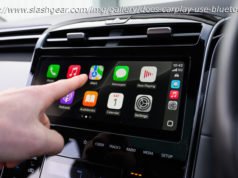It’s time to take it past 11.
Apple’s WWDC conference is almost here, which means one sure thing: a preview of the next version of iOS. The last version of Apple’s iPhone and iPad operating system, iOS 11, had some pretty significant updates: a new control panel, ARKit, new Siri functions, central file directories, more Pencil support on iPads, a whole new iPad multitasking system, and more system storage management control. And that doesn’t even include some notable features that came in followup point releases, including a battery health beta and improved ARKit in iOS 11.3, and Apple Pay Cash in iOS 11.2.
Reports suggest that iOS 12 might be more of a ” High Sierra ” style update, fixing bugs and improving overall function, saving a broad overhaul with big new ideas for iOS 13 in 2019.
So, with our expectations thus lowered, this is what we’d like to see most. There are certainly plenty of areas for improvement.
More than eight months later, iOS 11 has lots of weird bugs. Sometimes, apps float in the corners of the screen. Notifications sometimes don’t show up. Autocorrect can act strangely. “Do Not Disturb While Driving” mode ends up working when I’m not driving, and sending me messages when I am. And there are many more random freezes now than remember in years past. Make everything work more smoothly, please.
If most of Apple’s 2018 phone lineup is going to have the iPhone X’s Face ID and home button-free design, as rumored, it’s time to touch up what’s been bothering us most about the iPhone X: the strange pull-down-from-the-corner Control Center, or the way the top bar of information now hides key bits of info. The side button controls for resetting and turning off the phone are pretty confusing, too. Hopefully iOS 12 will smooth over the experience in advance of the wave of similar-looking phones.
Siri has improved over time, but it still siri-ously lags behind Google Assistant (and Amazon Alexa) at contextually connecting to all the things we’d like it to. A few things Google Assistant and Alexa do now could be really helpful. First, there should be even more contextual follow-ups to questions, so that Siri doesn’t lose the conversational thread so much. Second, a bigger focus on app-like ways to launch particular sub-functions — say you want to launch an audio game, or control your TV for while — like Google Assistant does with Actions or Alexa does with Skills, could help a lot. That would involve Siri connecting with more platforms and things.
For the second year in a row, Control Center is on the wish list. That’s because last year’s total update offered more buttons to launch things, but still lacked deeper controls to key features, and deep customization. Only a certain set of features can be added to Control Center, but not everything. 3D Touch can be used for some sub-settings, but not for others. And why can’t we pick our Wi-Fi network or connect Bluetooth devices from contextual 3D Touch menus? More settings should be controllable, and more app shortcuts should be added. And the way Wi-Fi and Bluetooth is sometimes “turned off” but kept on? Don’t get me started.
The brilliant way that the iPhone X can swap apps by swiping at the bottom of the screen should make its way to iOS in general (it’s still a home button double-press on Touch ID iPhones). Why make it something only X owners can appreciate? Or, why not make it something that can be toggled on and off?
Considering all the focus on battery performance over the last year in Apple’s previous iPhones, leading to Apple releasing a battery-management tool update to iOS 11, it’s a good chance for iOS 12 to go further. Apple’s battery health tool is in beta now, but a revamped version with ways to optimize for improved battery life would be a big help. It could be the battery version of Apple’s storage optimization in iOS 11.
Apple is totally behind the curve when it comes to making iOS devices easy to multiple people to use. That’s especially true for the iPad, where there should have a “kid mode” that locks out features, but toggled as easily as it can be on an Amazon tablet or a Chromebook. Maybe we don’t all share iPhones, but we certainly share iPads.
Apple made a huge splash with the AR features in ARKit last year, but it’s time to go deeper… and to the camera. Google Lens has been one of the most intriguing Android updates in Oreo, using the camera to quickly scan and identify the world. Apple’s own camera app added QR code scanning last year, but adding more AI-enabled modes with AR would be a solid next step.
If the iPhone doesn’t scan your face properly and has a Face ID fail, which happens quite a lot, there should be a much clearer way to try again (as you can do on the Galaxy S9), or flag that when you’re logging in. Right now, Face ID doesn’t really explain what didn’t work when it doesn’t work, and how to initiate another pass… it just doesn’t work, and leaves you staring at the lock screen.
Apple’s implementation of 3D Touch over the last few years has been bizarre. While the pressure-sensitive technology has always been impressive in theory, it’s rarely used much, or consistently, across apps and the OS. Even worse, the difference between pressing in and tapping-and-holding can get confusing. iOS 12 should rethink 3D Touch, or maybe minimize it.
It’s still strange how notifications pop up on the iPhone, especially on the home screen. Yes, this is generally how smartphones work… but considering how many people complain about notifications (or turn them off completely), a new layout, or a way of organizing all the notifications, seems in order. And it should be far easier to simply control (or toggle) notifications, versus the labyrinth that greets users in Notification Settings.
Last year, the iPad started to grow into its own more productivity-focused OS versus what the iPhone can do. The two devices should keep splitting. The iPad should gain even more ways to multitask and share information on a larger screen.






